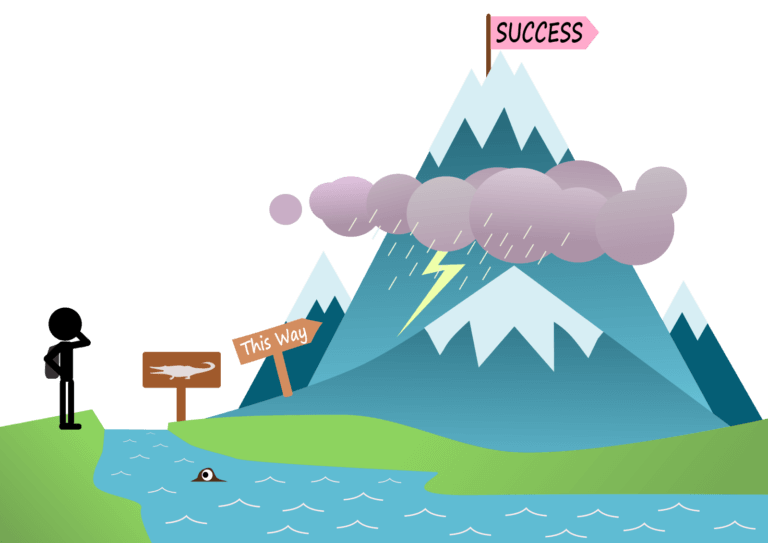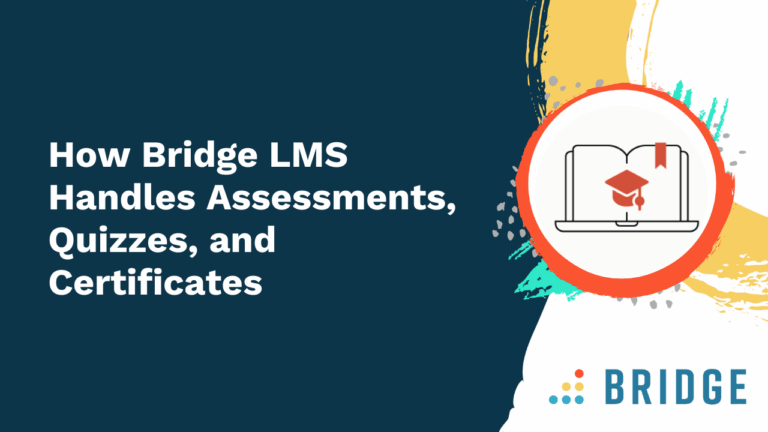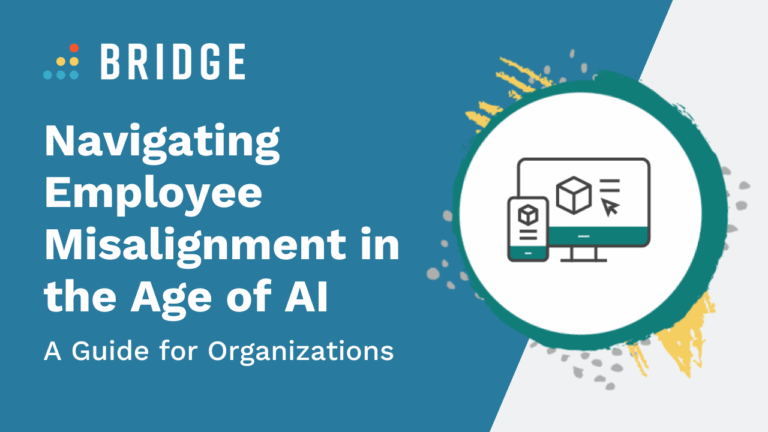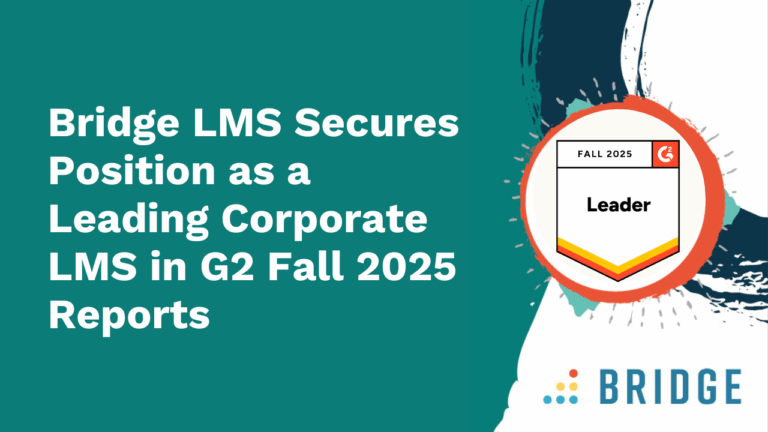Your employees have their own goals and ambitions, and to advance in their careers, they need learning and development opportunities aligned with their needs. But access to learning isn’t enough on its own—it won’t give your people the relevant knowledge and skills needed to grow, and they won’t see the value in what they’re learning.
CIPD data shows that when learning is poorly focused, lacks accountability, and has no clear plan, 72% of organizations find that employees don’t understand why they’re engaging in L&D, and 69% don’t know how to reflect on what they’ve learned.
For training to be meaningful and effective, organizations need to work with their people to understand what they want to learn and translate this into an actionable learning plan to deliver relevant training.
Why Does Personalized Learning Matter?
It’s not enough to invest in a well-stocked library of training courses—your learners probably won’t actively pursue learning or engage with content unless it’s relevant to their needs. LinkedIn’s Workplace Learning Report supports this, as findings show that employees’ top three motivations to learn are connected to their careers. They want training that:
- Is personalized to their interests
- Keeps them up to date in their field
- Helps them reach their career goals
For employee development to be effective, it needs to equip them with the skills to succeed in their current roles and advance into new positions.
WANT TO DELIVER MEMORABLE WORKPLACE LEARNING? READ THIS! | ‘10 Facts & Stats About Learning Retention You’ll Want to Remember’
Personalized Learning Starts With Skills Development
Building personalized learning plans starts with skills. According to Deloitte, the ability to react to change is becoming more important than standardized work procedures, and organizations are redefining strategies in response.
In 2022, 89% of executives agree that skills are becoming more important than jobs for organizations to define work, deploy talent, manage careers, and assess employees. What’s more, only 19% believe traditional jobs are the best way to organize work to fulfill future goals. Your employees’ career goals are personal, and when you break down their visions into skills, you can map out training plans.
Here’s how to work with your employees to understand the skills they want to develop and help them achieve their goals:
1) Know What Your Employees Want to Achieve
The first step to delivering personalized learning is to understand the skills your people already have and the skills they want to develop to move into future roles. This information can be gained from engagement surveys, performance reviews, or based on market data. However, the most valuable source of information will likely be with managers during career conversations or one-on-ones.
Understanding your employees’ needs and aspirations is essential. Whether an employee has their career mapped out in detail or only has a rough idea about what they want to do, give them the opportunity to define the skills they’ll need. Giving your people a framework to explain what’s most important to them in their career and what they want to achieve means you can match relevant content, mentors, projects, and tasks to help them develop these skills.
A great starting point is the Career Drivers game from Bridge. This free card-based activity encourages employees, alongside their line managers, to identify and discuss their main career motivators and ambitions.
2) Look at Skills Instead of Career Paths
Avoid language like “competencies” when mapping career visions and talk about skills instead, because it’s a language everyone understands. Skills allow for greater agility, innovation, and talent mobility within your organization. When employees talk about where they want to go in their careers, explore the skills they want to develop rather than the job title they want. Whether it’s something technical and role-specific like data analysis or a more transferable behavior like empathy, it’s easy to understand their intentions and match them with relevant training.
When employees can identify their current strengths and the skills they’re working towards instead of just the ones that someone traditionally on their career paths should develop, they’ll see possibilities to jump into different roles or departments. Moving around the business might give your employees the chance to put their skills to better use.
MORE TO EXPLORE ON RESKILLING | ‘The Race to Reskill: 3 Ways Internal Mobility Can Help Close the Skills Gap’
3) Tie Training to Business Outcomes
It’s not enough to offer courses with no end goal or outcome—training needs to be deliberate. Communicate the business impact of training by showing learners the positive effect they create and align training with performance metrics to encourage ownership of goals.
4) Look to Managers for Support
Putting learning and development at the heart of your culture takes ongoing commitment from your leaders. They need to show that L&D is a priority by creating continuous training opportunities, encouraging collaboration and knowledge-sharing, and showing that they’re ready to learn from others to drive organizational growth. Your managers have a vital role in building this culture because they’re the ones who can best communicate these values and goals to your employees.
Managers are at the heart of sharing your organization’s culture with employees. Once managers know what team members want to achieve and the skills they need, they should work together to find relevant training courses, block out dedicated time in their calendars, and catch up regularly to share knowledge. Holding each other accountable through knowledge-sharing shows the value of learning and development and encourages employees to reflect on what they’ve learned.
How Technology Helps to Deliver Personalized Learning Experiences
Deciding which skills each employee wants to improve or gain is only half the story, as they need engaging training aligned with their goals. And that’s where having the right tech comes in. Here are several simple steps your organization can take to deliver personalized learning experiences:
1) Create More Video Content
McKinsey’s research shows some of the most effective learning formats for skills development include digital learning, workshops, and peer learning. Creating videos is a powerful way to meet these criteria and deliver impactful training that communicates ideas, tone, and nuance. When someone in the same organization creates that content, it’s relevant to the learner and how they do things. There’s an inherent trust associated with someone that helps people connect and relate. Informal videos can be one of the best tools to deliver personalized development.
It’s not just your subject matter experts and leaders who can act as your influencers—every one of your employees has something to share and someone who can benefit. Videos don’t need to be polished or professional—your people might even gain more by watching an informal video made by one of their peers because it’s relatable and relevant to them and their needs.
KEEP READING | ‘Subject Matter Experts: The Key to Knowledge Transfer’
2) Use an LMS to Host Content
Your people create a wealth of content without realizing it by hosting virtual meetings and engaging in conversations. Most of this content lives on personal drives and in private links, so nobody will ever find it. That’s valuable information your employees could be missing out on. A Learning Management System LMS provides a central place to store, organize, and discover employee-generated or subject matter expert-generated content. Your people can access a wealth of material on-demand and tap into the knowledge of others to find what they need.
An LMS also holds you accountable for that content by tracking it to show who’s doing what. It can reveal trends to show what skills people are most interested in learning and whether you have suitable content that meets those needs. Learning platforms can show how content feeds into skills and roles to look for gaps to inform where content is missing, what people want to learn, and if the right people are in the right roles based on their skills.
LOOKING FOR AN LMS? CHECK THIS OUT! | ‘How to Choose an LMS for Your Organization’
3) Focus on the Message, Not the Medium
Any learning your employees take needs to resonate with them. They all have preferences when it comes to creating and consuming content—while some prefer the written word, others will be more comfortable in front of the camera. Offering multiple formats is a great way to appeal to everyone, but only if the message is clear. For learning to be relevant and compelling, it must tell a good story, no matter what the medium.
4) Share Content Asynchronously
Planning live training can get tricky when you factor in disruptions to workflow and scheduling conflicts. That’s before you even consider that content creators and consumers can be in different locations or time zones! In these cases, sharing knowledge asynchronously is essential because learners can still access the necessary information at a time most suited to them. Whether they like to learn on the move, break training into bite-sized chunks, or set aside a dedicated time each week, learners are more likely to be focused and engaged with the material if they can adapt it to their learning style, needs, and preferences.
GET YOUR PERSONALIZED LEARNING PLAN TEMPLATE | ‘Planning for Success: The Importance of Employee Training and Development Plans’
How Can Bridge Help Personalize Learning?
Bridge’s learning management system gives you the power to build and distribute personalized learning journeys and provide every employee with the skills they need to achieve their goals.Guide learners through a series of dynamic experiences to put them in charge of their learning experiences and schedule the right content at the moment of need. Tailor every part of your employees’ journey to their needs. Deliver engaging videos to teach them the skills they need, connect them with peers to learn on the job, and schedule check-ins to share knowledge at key moments. Bridge Advanced Video gives you the power to create, index, and discover that video content.




